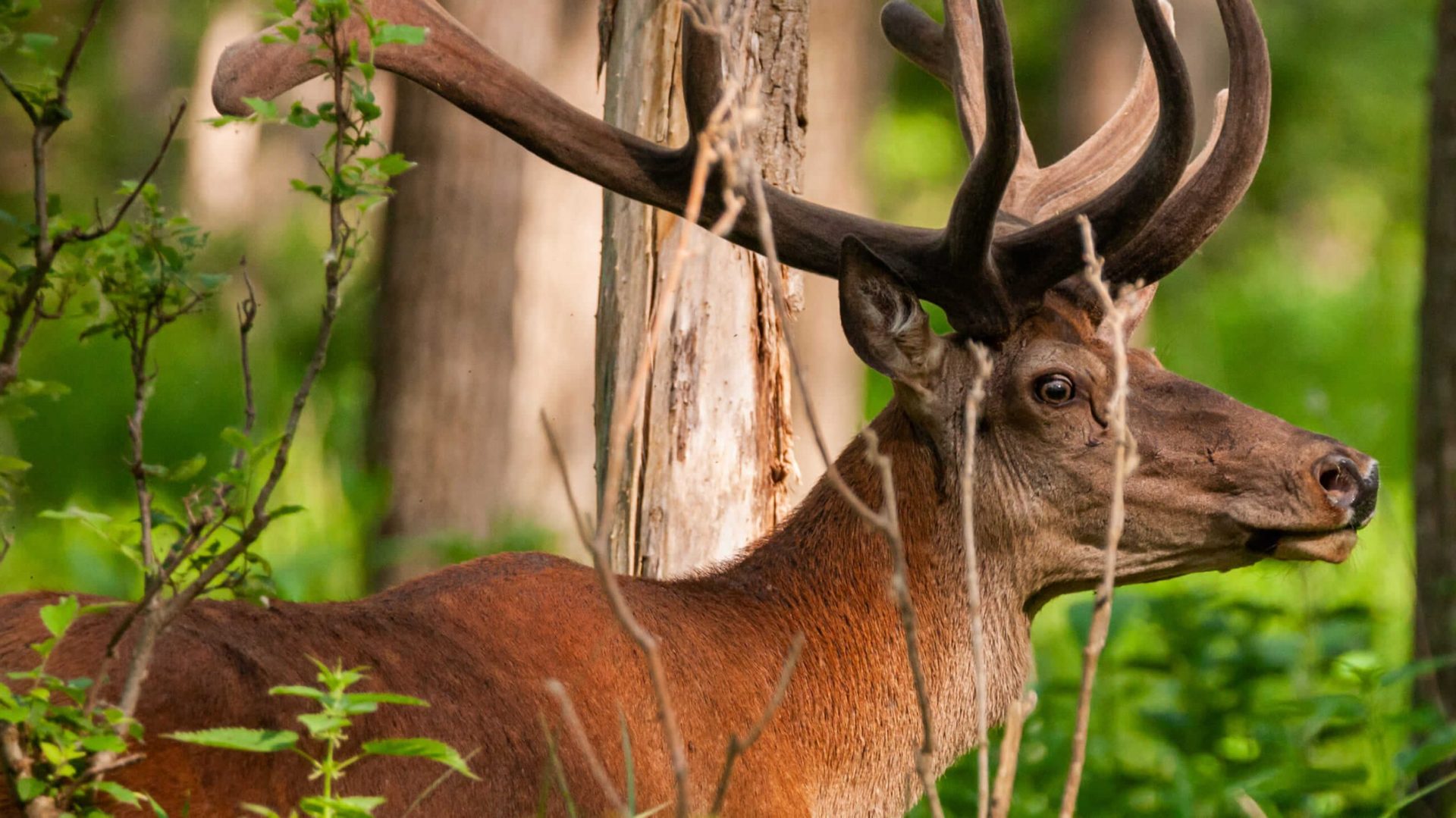With its gentle gaze and acute senses, the red deer is the largest naturally occurring mammal in Portugal. Spotting some of the specimens that live freely in Portuguese forests and woodlands is not always easy. Autumn is the best season.
With a greyish-brown coat in winter and reddish in summer, the red deer (Cervus elaphus) is a large, friendly mammal, the largest in the wild in Portugal, reaching over two metres in length and weighing over 170 kilos.
Easy to observe in parks and reserves, such as the Biological Park of Serra da Lousã or the Tapada Nacional de Mafra, this herbivore is relatively common in the wild in several Portuguese regions, and finds rest and refuge in forested areas and habitats with dense cover, from which it emerges to feed in more open areas of scrubland and pasture.
In more open areas, they become easier to spot during the autumn months, when the rut occurs. The word rut is related to the roar or bellowing noise that the male deer make during the breeding season, which takes place every year between September and November and lasts for about a month. The loud, guttural sounds serve to drive away other males and attract females.
During the rut, the deer remain in less forested areas, so that they stand out and impress the females. Confrontations between males often take place on open terrain, scrubland, and clearings. This is how the strongest and most dominant males are chosen; in other words, the ones that will form the biggest harem and produce the most offspring.
Outside breeding season, adult males and females live in separate small groups. After mating, the females move away and concentrate on gestation, which lasts almost eight months (about 235 days), as well taking care of the previous year’s young, who remain in the company of their mothers. Births take place in late spring and early summer. Usually, only one calf is born, although twins are not unheard of.
In the first months of their lives, calves have a dark brown coat with whitish-yellow spots their backs and flanks, an image reminiscent of a very familiar children’s—Bambi. Despite the similarities, the star of this film was not a Cervus elaphus (species common in Europe), but Odocoileus virginianus, known as a white-tailed deer and native to the Americas, especially North America.
The subspecies living in Portugal and Spain, usually identified as Cervus elaphus hispanicus, is slightly different, smaller, and has less red fur than the subspecies found in northern Europe. It is a genetic oddity thought to have been around since the Last Glacial Maximum (during the so-called Ice Age or Würm Glaciation), as revealed by a 2019 study involving a team of researchers from CIBIO-InBio – Research Centre for Biodiversity and Genetic Resources. According to its findings, different groups of deer have managed to find refuge in small areas on either side of the Pyrenees, which probably led to the divergence between the population of Iberia and that of the rest of Europe more than 20,000 years ago.
Despite these differences, the Red List published by the International Union for the Conservation of Nature assessed the species Cervus elaphus as a whole (in 2015), and classified it as of ‘Least Concern’, with its numbers on the increase in its natural environment: practically all of Europe, parts of Western Asia, and small areas of Africa.
In Portugal, over the last 50 to 70 years after a sharp decline, the species has consolidated its position, in some cases with human support, as was the case with the red deer reintroduction programme in the Serra da Lousã mountains, that has been monitored by biologist and researcher Carlos Fonseca since 1995. Besides this population, among the largest are the ones in the Montesinho National Park, in north-eastern Trás-os-Montes, and the Tagus International Park. There are also other animals in fenced and semi-enclosed areas, as well as a population in the mountains of the Algarve and Alentejo, as far west as Odemira: “during a fire, at the beginning of this century, the enclosure at Herdade da Parra (Silves) was opened so that the animals would not be endangered, and the red deer that came out managed to settle and multiply throughout this mountainous area”, explains Carlos Fonseca.





